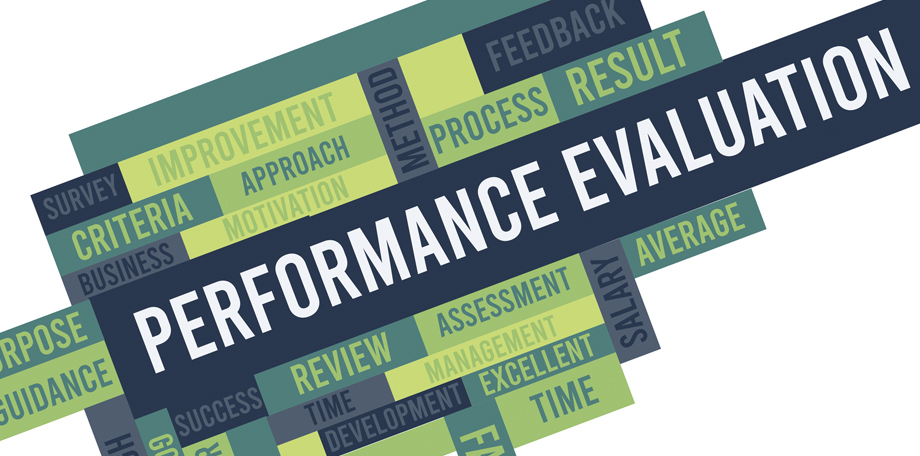Annual reviews are dreaded on both sides of the table – by both employees and managers. However, they are unavoidable because they are a valuable tool for documenting employee performance over the past year and helping to set goals and objectives for the next year. Despite reviews being a necessary evil, most leaders will tell you these crucial conversations are one of the hardest parts of their jobs.
So, how can we make these delicate discussions more productive and less painful? It’s all in the leader’s preparation. Here are 15 strategies to help you tackle your next round of performance reviews successfully.
- Block more time than you think you will need to prep.
Schedule chunks of times in a day – uninterrupted blocks of 90 minutes to three hours – to allow for deep thought. It’s important to keep those time blocks sacred! It can be very easy to cancel or reschedule these time blocks for more pressing urgent needs, especially if you are prone to procrastination or simply dread doing reviews. But unless you block the time to allow for mindful, deep analysis, it is unlikely you will deliver your best review performance. Your employees deserve this thoughtfulness, especially if it’s only a once-a-year process.
2. Write out the review.
Don’t wing it. Companies vary greatly as to how immersive their annual reviews are, but at a minimum, you should have an outline and write out the key points for the ensuing discussion. Ideally, you take the time to write out the entire review comprehensively. Whatever you do, don’t leave it to memory!
3. Seek 360 feedback prior to delivering the review.
Whether your company requires it or not, it’s great to have a 360 view of how your employee performs, not just with you but others. A 360-degree review is based on an employee self-assessment and peer reviews, as well as superior and subordinate feedback.
Some individuals are a “star” employee – but only managing up. You won’t find out the true level of their operational and cross functional excellence without soliciting direct feedback from cross functional peers and colleagues who they work closely with. There might be some very surprising assessments that you’re unaware of. Make sure you bring in the whole picture by asking their colleagues to ground their assessments so you can understand how the employee truly works cross functionally.
4. Schedule enough time to have a meaningful conversation.
It’s not uncommon that I hear from my executive coaching clients that their annual review meeting lasted five to fifteen minutes. After a year of performance, they hear some version of: ‘You’re great! Keep doing what you’re doing. Here’s your raise.’ Some leaders only save time for their “problem” employees, which is a mistake. The greatest ROI of performance reviews is offering rich, immersive performance feedback, career-pathing and development opportunities – especially to your best performers. Don’t miss this opportunity as it will pay a myriad of dividends, not only to your leadership likeability but also the organization’s bottom line.
5. Commit to becoming a “people leader. “
To train yourself to become a better people leader, be observant, thoughtful and timely in your feedback throughout the year. Make notes when you are observing meaningful moments so you have them to reference later in performance reviews. Many leaders fail to think about the importance of individuals because they’re so focused on processing performance based on hitting quarterly goals, KPIs, etc. If you want to be a leader who attracts, retains, develops and inspires their direct reports, you need to be a people leader. This becomes even more important the higher you move up in the organization.
6. Set the stage.
Open the review by onboarding the individual as to how the process will work, even if this isn’t their first review. Express what your intentions and deliverables are for the review. Frame it out for the employee and also address the importance of candor (and any other component you feel is important), as well as your investment in the growth and development of the employee. Of course, these are areas to express only if they are genuine and authentic.
7. Offer effective feedback that the employee can act on.
Remember to focus on the ‘behavior’ rather than the person. Offer context and specific examples so they can deeply understand not only the behavior, but your perspective. And, to the best of your ability, eliminate, ‘you’ statements. ‘You’ statements easily conjure up reflexive, defensive posturing and when that happens, one’s capacity to hear is severely limited. Lastly, when appropriate, share the unintended impact their behavior has on the team and/or organization.
8. Be curious and open-minded.
Every interaction is an opportunity to better know and understand your employee. Reviews set the stage and opportunity for just that! Remember, everyone wants to feel seen, heard and appreciated. In fact, research shows that most employees value appreciation in the workplace over money. So, make it your intention to connect during the review and understand what they value. Create dialogue and learn what they enjoy most and least about their current job. Find out where they feel they’re struggling. Find out what stretch opportunities interest them. And of course, offer where you can provide support, development, coaching and mentoring.
9. Give candid real-time feedback.
Your employees need to clearly understand what they’re doing well and what opportunities exist for development. Reviews are an opportunity to set expectations, clarify roles and responsibilities, understand and align your perception and their self-perceptions. If perceptions are off, bridge that gap in awareness with Socratic questioning and if needed, fill in their awareness gaps and blindness with clear situational examples.
10. Don’t forget to praise and inspire your top performers.
Amazingly and mistakenly, top performers are often underserved and overlooked during review time. They are often offered platitudes during reviews because what is there to say – they’re generally self-motivated and strong performers. So, many leaders focus most of their feedback time and energy on their weak performers. This is a mistake simply because your strong performers will yield your greatest return on investment for time spent. Be mindful to include career pathing conversations and stretch goals. But also, be mindful to rein them in if they are pushing themselves to unsustainable levels that will ultimately result in burnout.
11. Create a clear improvement plan for underperformers.
Underperformers need guidance on what needs to change, and they usually need coaching and help changing it. Set concrete goals that include clear follow ups to reevaluate progress and don’t forget to include an end date where the expectation is set for that new level of performance.
Spend your time creating a development plan, a mechanism for development with built-in timeframes to reevaluate performance and offer feedback in a timely manner. If there is an existing training program or peer coaching that will help level up the employee’s performance to become a valuable team contributor, now is the perfect time to offer that.
12. Listen for their primary perceptual lens.
Elicit stories, opinions and their unique views of events, etc. and really listen. Deeply listen for how someone shares their story. How they share their story tells you volumes about their underlying operating system – how they see and interpret the world. Do they tell stories repeatedly from a victim lens? A hero lens? A villain lens? Tremendous coaching and reframing opportunities will be presented to you as their leader if you identify a dominant lens that sabotages their performance or capacity. This can be game-changing for you to level up your own listening skills and overall awareness, and them for the A-ha potential for mindfulness and transformative change.
13. Be accountable for the impact and effectiveness of the review.
Own the result and the effectiveness of each performance review you deliver. Do this by setting the intentions of what you want to deliver, how you want to deliver it, how you’re going to co-create the experience to be a dialogue not a monologue, and how you want the person to feel when they leave the review. Rate your overall effectiveness in delivering on these intentions. Immediately after each review, allow 15 minutes to reflect and grade yourself for each of these five areas to foster your own growth and development. This provides an equal opportunity to evaluate, build deeper self-awareness, practice mindfulness and learn. Make immediate adjustments from your learnings and practice with each individual review.
14. Be sure to include soft skills.
The more senior a person is, the more emotional intelligence and soft skills factor into one’s success and effectiveness. Bring to each review an assessment of their ability in at least one soft skill area. This will not only build awareness, but it will also signal its importance. Leaders generally only bring soft skills up when there’s a problem. Instead, be proactive. Evaluate and look for capacity in one or more of these areas:
- Self-awareness
- Mindfulness
- Resilience
- The ability to ‘play well with others’
- Emotional maturity
- Emotional reactivity
- Building trust
- Ability to read the room
- Impact, and
- Influence.
With young leaders, focus on one soft skill development at a time. It’s never too early to bring it to their attention as an area of improvement.
15. Ask questions throughout and particularly at the end of the review.
Seek to understand your employee’s perspective by asking these effective questions:
- What did you hear today that stuck out for you?
- Based on what you heard today, what resonated with you? What didn’t?
- Did anything that you heard today surprise you?
- Is there anything you want to talk about further or get more context around?
- What two or three things did you take away today? Is there anything else you hoped we would discuss today that we didn’t?
Remember, anxiety lowers a person’s capacity to hear, so asking some questions at the end of the conversation to make sure they’re hearing what you intended them to hear is imperative.
Related: What to Do if You are Surprised By Your Performance Review
Finally, if you are a leader who dreads, procrastinates or shuns reviews – to level up your own leadership, get to the root of why you feel this way. You can start by identifying what category you fall into and then create your own development plan to address it.
- You have a perspective that performance reviews are waste of time and are eager to get them over with.
- You’re uncomfortable giving feedback or having crucial conversations.
- You think good-to-high performers don’t need feedback because they are performing just fine.
- You don’t feel you’re competent to effectively observe, articulate and express what’s needed to deliver immersive, rich feedback.
- You bristle at anything that refers to “people” leadership. You’re a product, process, “hit the quarterly number” leader – everything else is superfluous!
- You’re new at this. In that case, remind yourself that all new learning feels difficult and awkward, in fact – that’s how you know you’re learning!
If you want training on how to be more present for your employees not only during the review process, but for the entire year, an executive coach can help.



